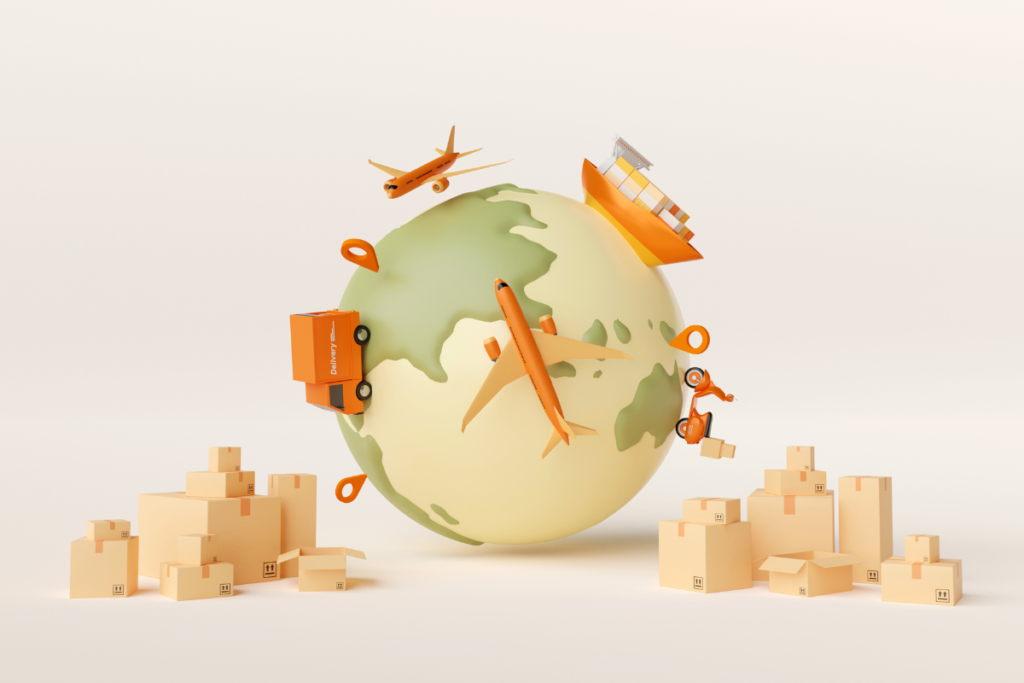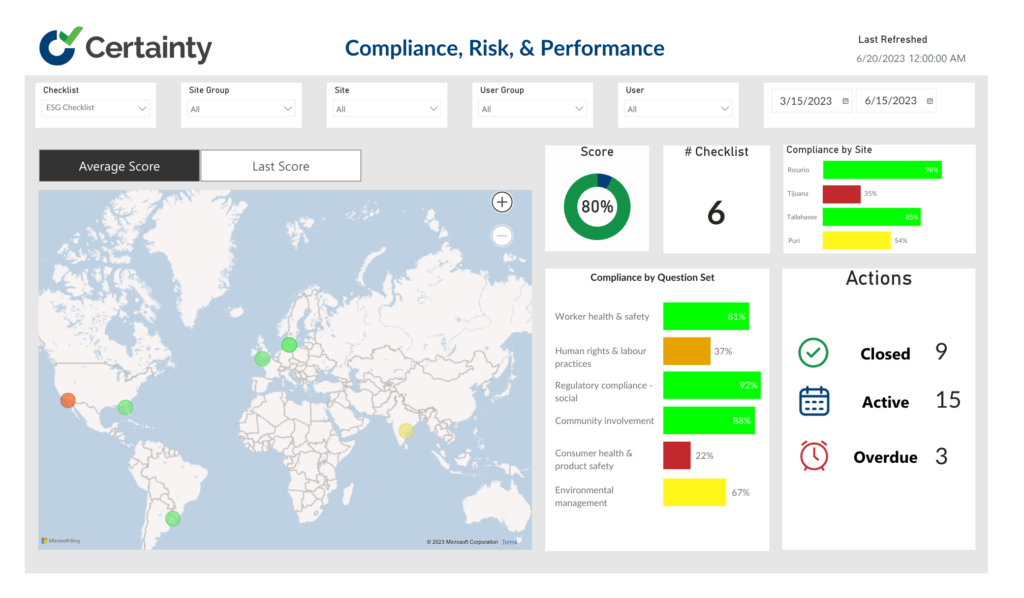Table of contents

In today’s global business landscape, the need for supplier sustainability due diligence has reached critical importance. Regulatory bodies are increasingly placing emphasis on responsible practices throughout the supply chain. Multinational corporations now face the monumental task of understanding and mitigating the social, environmental, and ethical impacts of their tier 1, tier 2, and tier 3 suppliers.
Failure to comply with these regulations can result in severe consequences such as substantial financial penalties, class action lawsuits, and long-lasting damage to a company’s reputation, revenue, and brand value.
To illustrate the scope and significance of these regulations, let’s take a closer look at some of the existing or impending supply chain sustainability and due diligence requirements that companies must navigate:
- German Supply Chain Act
- The impending EC Directive on Corporate Sustainability and Due Diligence
- Canada – Bill C 311
- Dutch Child Labour Due Diligence Law, in force 2022
- Norwegian Transparency Act
- Swiss Due Diligence Law
- French Duty of Vigilance Act
- United States Uyghur Forced Labor Prevention Act
In the following sections, we will dive into the challenges faced by companies in managing supplier sustainability due diligence and explore effective strategies and solutions that can help organizations navigate these complexities while fostering positive change in the global supply chain.
The Challenge: Tackling the Complexities of Supplier Sustainability Due Diligence
Navigating the realm of supply chain sustainability due diligence regulations is a formidable undertaking. Companies often find themselves grappling with numerous suppliers, intricate global supply chains, and the daunting task of collecting, assessing, and reporting extensive amounts of data. It can indeed seem like an overwhelming challenge. However, there are effective strategies to successfully navigate this complex landscape.
Let’s first explore the key challenges faced by businesses when it comes to supplier sustainability due diligence:
1. Managing a Multitude of Suppliers: Companies operating on a global scale often have an extensive network of suppliers, ranging from tier 1 to tier 3. Understanding and monitoring the social, environmental, and ethical impacts associated with each supplier can be a daunting task, particularly when dealing with hundreds or even thousands of them.
2. Complex Global Supply Chains: Supply chains today have become intricate and interconnected, spanning multiple countries and regions. Tracing the flow of products and materials across these complex networks can make it challenging to identify potential sustainability risks and ensure compliance throughout the entire supply chain.
3. Data Collection and Assessment: Gathering relevant data from suppliers is a critical step in conducting sustainability due diligence. However, collecting, managing, and analyzing vast amounts of data related to supplier operations, policies, and performance indicators can be overwhelming, especially without a structured and efficient system in place.
4. Ensuring Supplier Compliance: Engaging suppliers to participate actively in sustainability initiatives and adhere to compliance requirements can be a significant challenge. Overcoming language and cultural barriers, fostering collaboration, and encouraging supplier buy-in requires effective communication and a shared understanding of the importance of sustainability.
Despite these challenges, there are proven strategies and technologies that can help businesses effectively tackle supplier sustainability due diligence. In the following sections, we will explore practical solutions that enable efficient data management, streamline supplier assessments, and promote collaboration throughout the supply chain.
How to Ensure Compliance With Regulations
In the realm of supplier sustainability due diligence, compliance goes beyond mere checkboxes and regulatory obligations. It’s a transformative journey that empowers global corporations to go beyond the expected and seize the opportunity to drive positive change. By harnessing the power of collaboration, these corporations have the remarkable ability to forge meaningful relationships with suppliers, foster sustainable practices, and leave a lasting impact on the world we inhabit.
As we venture further, let’s unveil a series of practical steps that will guide global corporations in seamlessly ensuring compliance with regulations while embracing their role as catalysts for change.
Step 1: Identifying Your Suppliers – The Foundation of Sustainable Sourcing
To embark on the path of supplier sustainability due diligence, start by building a comprehensive record of all your suppliers. This entails not only knowing their names but also understanding their locations and establishing direct communication with dedicated sustainability contacts at each supplier. By forging strong relationships with your suppliers, you can foster collaboration and ensure a shared commitment to sustainability.
Step 2: Defining the Sustainability Standard to Assess Supplier Compliance
In the pursuit of supplier sustainability due diligence, global brands are embracing an approach that goes beyond traditional methods. They are turning to the power of checklists, recognizing that these tools hold the key to reducing complexity, enhancing supplier participation, and enabling consistent, comparable, and real-time reporting throughout the entire supply chain and business. By employing a checklist approach, organizations can navigate the intricacies of compliance with greater ease and transparency, while fostering collaboration among stakeholders.
While the specific sustainability standard checklists may vary depending on the regulations that govern each company, they serve as a foundation for assessing supplier compliance. Here are a few examples of such checklists that provide a starting point on this transformative journey:
- German Supply Chain Act (GSCA) Due Diligence Checklist: Designed to align with the requirements of the German Supply Chain Act, this checklist offers a comprehensive framework for evaluating supplier sustainability and mitigating risks.
- Supplier Social and Environmental Compliance Checklist: This checklist focuses on social and environmental aspects, enabling organizations to assess suppliers’ commitment to responsible practices and their impact on communities and ecosystems.
- SMETA Checklist: The SMETA (Sedex Members Ethical Trade Audit) checklist empowers organizations to evaluate suppliers’ ethical trade practices, covering areas such as labor rights, health and safety, and environmental performance.

30+ Audit and inspection checklists free for download.
Step 3: Scheduling Supplier Self-Assessments
Inviting suppliers to conduct self-assessments is vital in the sustainability due diligence journey. This empowers suppliers to evaluate their own social, environmental, and ethical performance and share relevant information, such as policies, procedures, and codes of conduct. It is essential to communicate the broader purpose of these assessments: to collectively manage and continuously improve sustainability performance, achieving shared goals that benefit all stakeholders involved.
Step 4: Completing Supplier Self-Assessments
As suppliers complete their self-assessments, your supply chain compliance team plays a crucial role in reviewing the responses, analyzing the data, and identifying areas for improvement. This collaborative process allows you to establish corrective actions tailored to each supplier’s needs and delegate them accordingly. By working together, you can foster a culture of continuous improvement and support suppliers in their journey toward greater sustainability.
Step 5: Monitoring and Reporting – Tracking Progress and Driving Change
As your suppliers complete their sustainability self-assessment, a transformative phase awaits—one that revolves around the critical aspects of review, reporting, and establishing corrective actions. Through the review of responses and supporting information, your supply chain compliance team uncovers areas for improvement and identifies opportunities to enhance sustainability performance. Armed with these valuable insights, you can craft tailored corrective actions that promote collaboration, adherence to ethical standards, and an unwavering commitment to continuous improvement among your suppliers.
Integral to this step is transparent reporting, serving as the conduit for effectively communicating your sustainability efforts, progress, and corrective actions to stakeholders. By sharing comprehensive reports internally and externally, you foster a culture of accountability, build trust, and illuminate your collective dedication to a sustainable future. This process creates a mindset of continuous improvement, collaboration, and positive change, propelling your organization toward a brighter and more responsible tomorrow.
Leveraging Technology for Efficient Supplier Sustainability Due Diligence
Given the scale and complexity of managing supplier sustainability due diligence, companies are increasingly turning to cloud-based software solutions like Certainty.

These solutions offer a wide range of benefits, including:
- Streamlined Supplier Identification and Mapping: Easily locate and map suppliers across global supply chains, gaining a holistic view of your network.
- Customizable Sustainability Checklists: Tailor sustainability checklists to suit your unique needs and regulatory requirements, ensuring comprehensive assessments.
- Efficient Supplier Self-Assessments: Enable suppliers to complete assessments in their preferred language, facilitating engagement and accurate reporting.
- Automated Scheduling and Reminders: Simplify the process of scheduling and managing supplier self-assessments with automated notifications and reminders.
- Real-Time Monitoring and Benchmarking: Gain insights into self-assessment completion rates, compliance scores, and corrective actions, empowering you to make data-driven decisions.
- Collaborative Corrective Action Management: Easily review supplier self-assessments, establish corrective actions, and monitor their implementation to drive continuous improvement.
- Consistent and Comparable Reporting: Generate comprehensive reports that provide a clear overview of supplier compliance, performance benchmarks, and compliance mapping across your supply chain.
By harnessing the power of technology, you can confidently and efficiently meet your sustainability due diligence requirements while simultaneously fostering transparency, accountability, and positive change throughout your global supply chains.
You might also be interested in:



